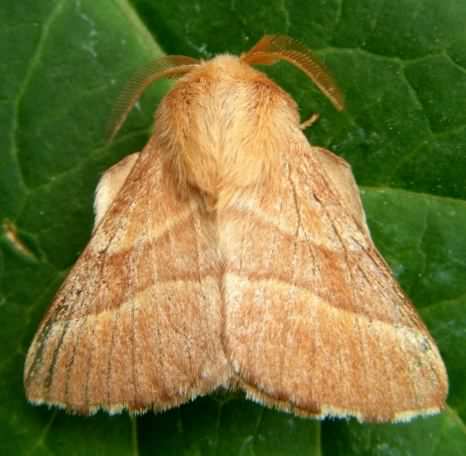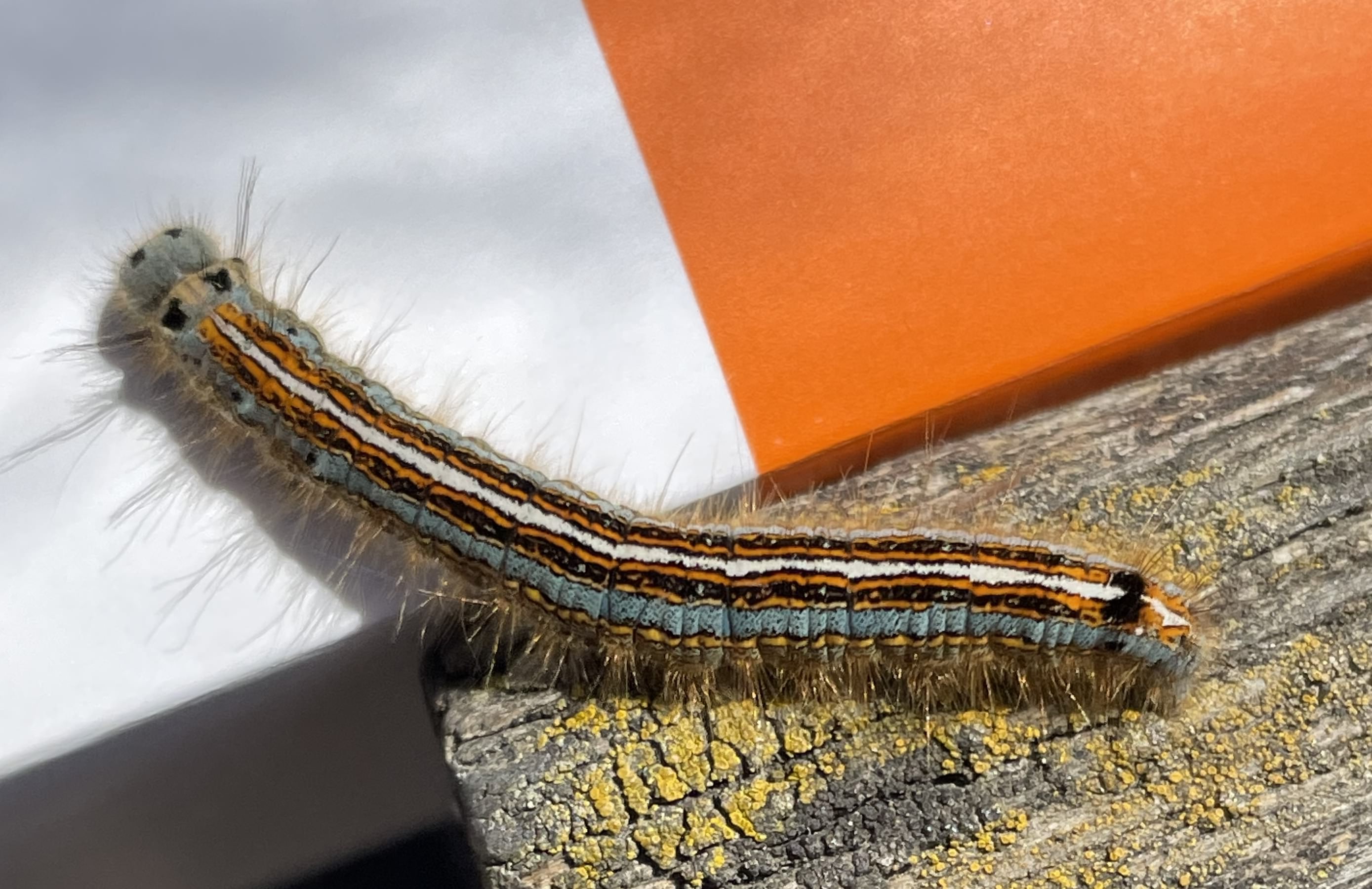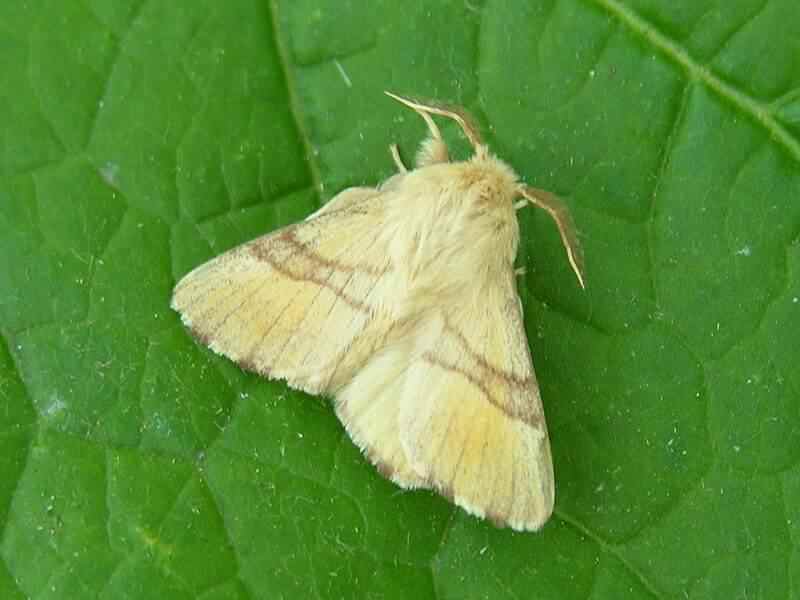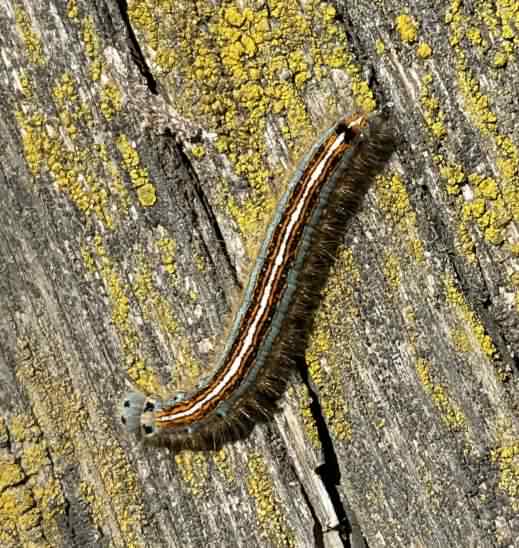
Photo ©2010 - Graham Calow
NatureSpot
Click any photo for a larger image
More photos
Photo ©2010 - Graham Calow
NatureSpot
Click any photo for a larger image
 Lackey moth - Malacosoma neustria
Lackey moth - Malacosoma neustria
Family - Lasiocampidae
The Lackey moth is a common distinctive species across southern Britain and central Europe with a wingspan ranging from 30-45mm (1.2-1.8in). Forewings are a light-brown with a pattern of darker lines and bands, whilst the hindwings are paler, often creamy or white. The body is covered in dense, fine reddish-brown or yellowish hairs, giving it a somewhat fuzzy appearance. Like most moths they have feathery antennae that aid in sensing their environment and detecting pheromones. Found in a variety of habitats, including woodlands, grasslands, and urban areas. They are often associated with, and feed on the leaves of deciduous trees, including Oaks, cherries, and Hawthorns, Blackthorn, Plums, Hornbeam and Apples.
The caterpillars are densely covered in long, tufted hairs, which can be various shades of brown, black, or grey. They have a row of blue spots along their sides and prominent clumps of hairs near the ends. Gregarious caterpillars, often forming large communal nests on tree branches, held together by silk threads. As caterpillars, Lackey moths can defoliate trees, and their silk nests can sometimes be considered a nuisance. They overwinter as eggs, laid in bands around a twigs of the foodplant.
 The Lackey Moth is listed in the UK Biodiversity Action Plan priority species for research.
The Lackey Moth is listed in the UK Biodiversity Action Plan priority species for research.
Agassiz #66.003, Bradley & Fletcher #1634
 Photos ©2022– Click any photo for a larger image |
 Light coloured form Photo ©2005 Algirdas |
 Photo ©2022– |
| Close window | ||
Site design ©1999– Brickfields Country Park - Privacy -